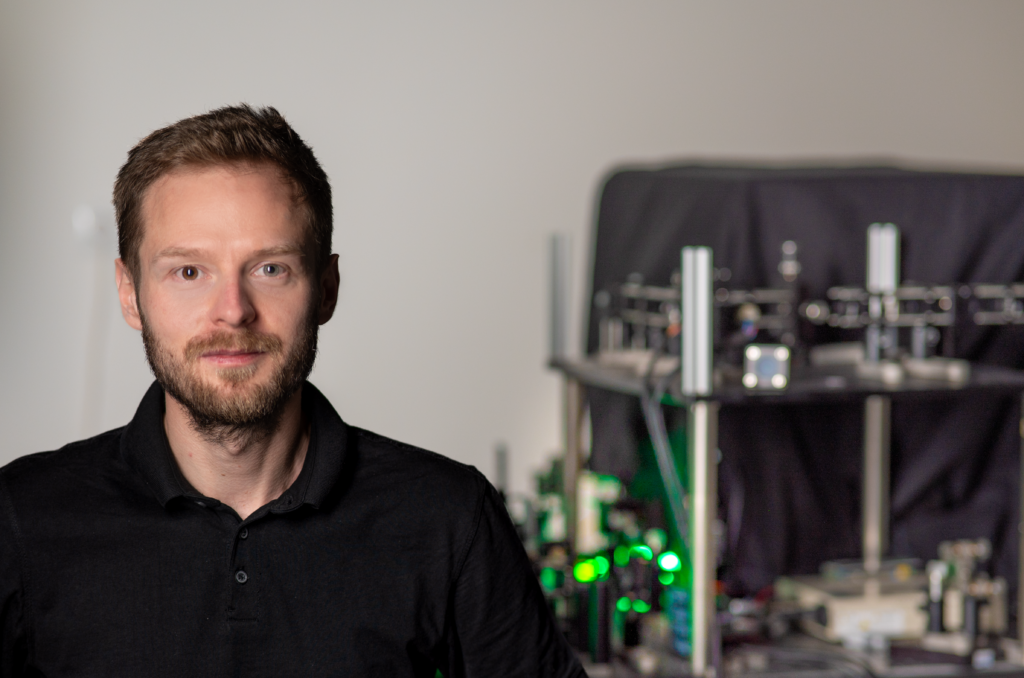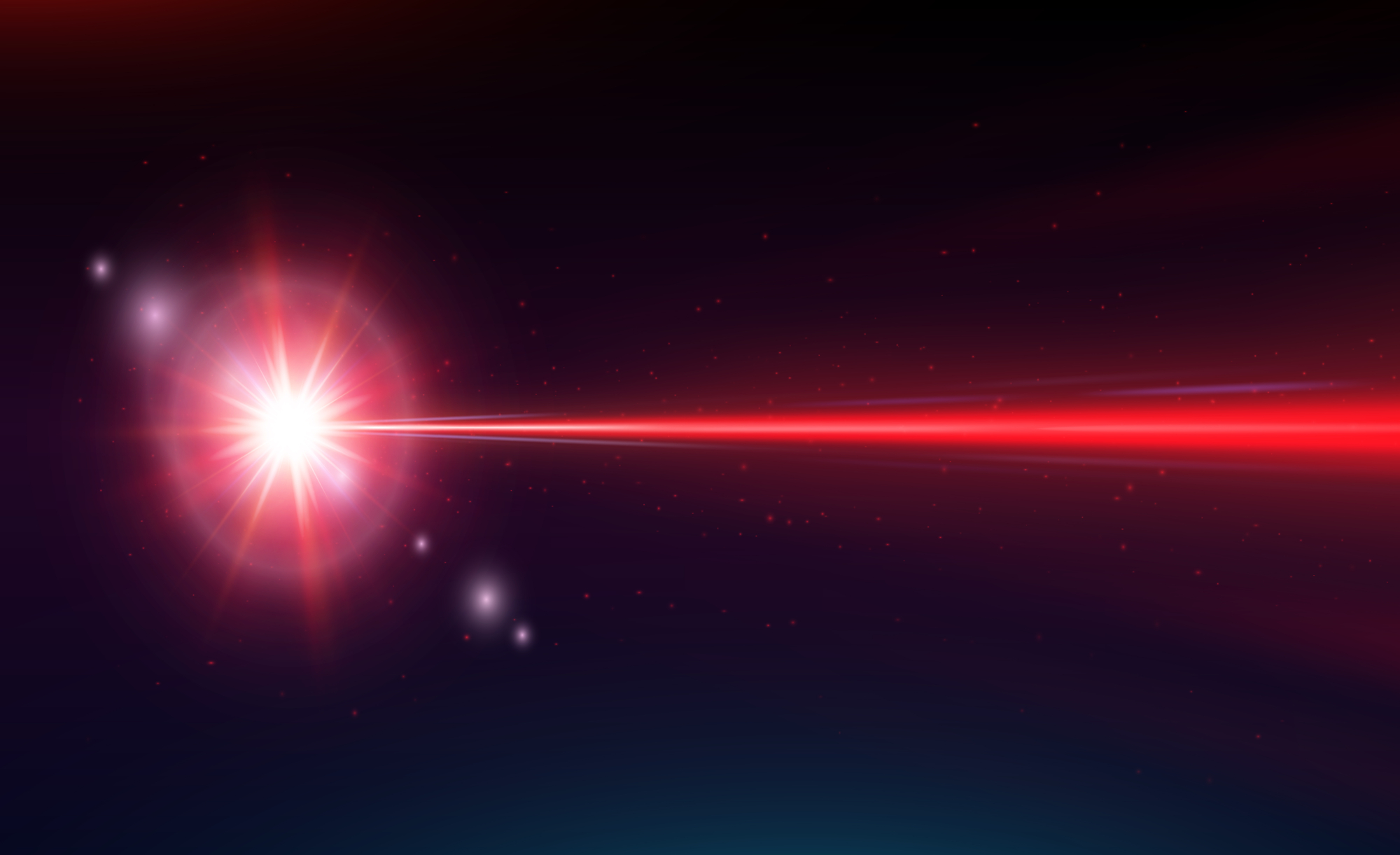Jakub Boguslawski, Ph.D., is a scientist and engineer working on a new generation of compact, femtosecond fiber lasers for biomedical applications. He is currently a postdoctoral researcher in the Physical Optics and Biophotonics group at the International Centre for Translational Eye Research (ICTER), and an assistant professor at the Faculty of Electronics, Photonics, and Microsystems at Wrocław University of Science and Technology. In a recent interview for Poland Weekly, ICTER head Prof. Maciej Wojtkowski described Jakub as one of the representatives of the group who are pioneering unprecedented solutions and highlighted that “these small miracles are done by them every day, when they finish one, they start a new challenge” which proves their exceptionality. Jakub deals with a field of science that arouses a lot of emotions, both positive and negative; it is a field so far little understood by the general public, but invariably associated with solutions of the future and modern technology. We are aware that lasers can be deadly weapons, but we also have an idea that they can be used for other purposes. We talk about one of these useful purposes of lasers with Jakub Bogusławski in an interview in which he tells us about the underpinnings of his work and introduces us to the image of a man who builds lasers for the benefit of society.
Jakub, you work at the International Centre for Translational Eye Research (ICTER) designing lasers, a rather unobvious connection, as it is difficult at first glance to find a common ground between these two worlds. So tell us, what do lasers and eyes have in common, and isn’t this combination destructive?
On the contrary. On the one hand, if we recall the lasers presented in movies and imagine the laser beam hitting the human eye, we become concerned that the organ would be irreparably damaged. However, let’s not succumb to the illusion of Hollywood fiction. Of course, lasers can be harmful to the human body at a high dose of energy. However, the development of science and a better understanding of the functioning of living organisms has allowed us to create conditions in which this type of energy is harmless and even proves useful. Examples include early diagnosis of eye diseases or developing new ophthalmic therapies.
So, to the question of what lasers and eyes have in common, the answer is that the contact of a laser light beam with the human eye can provide a lot of helpful information. How does this happen? The introduction of laser light into the eye, specifically into the retina and retinal pigment epithelium, results in fluorescence excitation. The fluorescence is emitted by naturally occurring fluorophores present in the eye. On its way out of the eye, the light is recorded using a highly sensitive photodetector, a photomultiplier. The optical system used here is called a scanning laser ophthalmoscope and is an entirely non-invasive and non-contact system. It first feeds light into the eye in the right way and then leads the light from the eye to the photodetector. The whole process is based on guiding light into and out of the eye, then the resulting data is processed in a computer, and we get an image that can then be analyzed and interpreted. The optical system is a bit similar to the OCT currently used in ophthalmologists’ offices. However, we only use a different light to excite and record the effects occurring in the eye. This phenomenon is called two-photon excited fluorescence.
Tell us what you do in your work.
I am a laser engineer, and I am involved in designing and developing new configurations of femtosecond lasers, that is, lasers that generate very short pulses of light. In the context of eye research, this property is beneficial because it solves the problem of lack of access to fluorophores in the retina and retinal pigment epithelium. The retina is at the back of the eye, and various fluorophores provide information about the functioning of that retina so that we can identify what changes occur there. The technical challenge is that those fluorophores can be stimulated using UV light because they absorb light in the range of these wavelengths. Nevertheless, such radiation cannot be shone into a person’s eye because it has high energy and would immediately destroy it. We have discovered that by using ultrashort infrared pulses, this problem can be solved by two-photon absorption, using two photons of half the energy, which is safe for the human eye. With this technology, we can safely bring this light into the eye and access those fluorophores that we could not access before. This is complementary information that, in other ways, no one could get in a way safe for human vision, at least at the moment. And this is precisely what femtosecond pulses are needed for, with adequately selected parameters: they must be calibrated in the right spectral range, very short, and with a specific repetition rate. Such lasers so far did not exist, they could not be bought, and we undertook to design and construct a special laser with precisely these parameters, which are optimal.
A whole group of people under the leadership of professor Grzegorz Soboń at the Wrocław University of Science and Technology was involved in constructing the first laser with the parameters mentioned above. Although I was not involved in the first stages, having joined the team in Wrocław more than a year ago, I am now engaged in the engineering and construction this type of system. All the components needed for the construction of this laser are commercially available; nevertheless, since it is a fiber laser, its construction is based on different types of optical fibers, which need to be adequately designed, and then combined to shape the radiation properly. It is a proprietary, high-precision, and high-tech art of engineering.
What values guide you in your scientific work?
I think it would be the usefulness. I want the things I do to be useful to someone, to create new opportunities, and to solve existing problems. What we are doing at ICTER is an excellent example because it is not art for art’s sake or science for science’s sake, but we have a specific problem to solve. Our goal is fundamental: to protect people’s eyesight, help diagnose eye diseases and develop new ophthalmic therapies.
What are the biggest challenges and most beautiful aspects of scientific work?
The biggest challenge for all scientists is to know what problem to tackle because the number of possibilities is enormous, and humanity already knows a great deal. Identifying a problem and defining it, then choosing whether this path we want to take makes sense, whether anyone needs it, whether it has a chance of succeeding, or whether it is worth pursuing, is perhaps the most challenging question. In particular, there are also huge costs along the way because this research is expensive, and many people are involved. Much time is devoted to it, and at the beginning, it is unclear whether it makes sense, whether it can be done, or whether it will not be a wasted effort. On the other hand, this can also lead to those most beautiful aspects of scientific work, because working on a scientific problem can go in such an unexpected direction. We can encounter a lot of surprises and unforeseen twists and turns. We can plan something for ourselves, and later it turns out we are somewhere else than we thought we would be. For a scientist, this is fascinating.
Tell us about your passions outside of work.
My biggest passion is food, which means both cooking and eating. I like to read books about cuisine and watch cooking shows. When I travel, I try to find out what is typical food in a particular place and why people eat it; it interests me. Besides, I also do sports of various kinds, such as running, hiking, biking, and water sports, especially windsurfing. I have participated in several marathons.
I see that your eyes have two different colors. What is the reason for this condition, and how do you feel about having such outstanding eyes? Did it influence your decision to do research specifically on eyesight?

This effect is called heterochromia, a genetic defect that occurs in less than 1% of the population, but it does not affect vision or have any effects other than the different colored irises. Occasionally someone will notice that one is green and the other brown, but most people do not react to my eyes at all. This condition did not influence my decision to work at ICTER. I am here by accident. I only deal with eyes because I deal with lasers, and the utility of lasers in the context of eye research led me to our centre. These lasers I am constructing could be useful for seeing something more in the human eye than we could see before.
What are your career plans for the next ten years?
First of all, I want the results of my work to be useful. I want to construct devices that will work and can be used by someone. I want these lasers to be able to do something good for society. I dream that the things I construct will be helpful and practically used. For example, the new fluorescence imaging of the eye, can be used clinically and get information that will help diagnose ocular diseases earlier. More broadly, I would like to look for new practical applications of these lasers that we can build because they are quite unique, so these features can be used somewhere it really makes sense. Such a laser is quite complicated, quite expensive, so I would like to find such applications that give enough new information and possibilities that it makes practical sense to use them.
At the moment, I plan to further develop my career in Poland, you can do research here at a very good level, and I feel good here. I have traveled abroad several times for scientific internships, including working at the University of California Irvine in Prof. Krzysztof Palczewski’s group, where we built a similar set-up to the one we have in Warsaw. Since there is an ophthalmology department, ophthalmic companies and doctors are working there, it is a good place to test this method on patients with eye diseases. Previously, I also trained in Stockholm at the Royal Institute of Technology KTH, Aalto University in Finland, and Helmholtz-Zentrum in Dresden. All of these visits involved the development of new types of lasers or developing femtosecond pulse shaping techniques.
I am just starting an NCN-funded grant in which my team of 3 and I will work on a new class of laser for two-photon excited fluorescence ophthalmoscopy. We want to develop a “smart” femtosecond laser that can adapt its parameters by itself to the object being imaged. The title of the grant is “Adaptive femtosecond pulse source for multiphoton fluorescence microscopy and ophthalmoscopy,” and the project will be carried out at the Wrocław University of Science and Technology. So the implementation of this grant is undoubtedly one of the plans for the next few years.
Thank you for this interview, Jakub. I am uplifted by your attitude and wish you good luck with all your plans.
Although he is developing laser technologies of the future that will shape the progress of ophthalmology, Dr. Jakub Bogusławski is a humble scientist. The greatest value that guides his work is utility directed at solving existing research problems. Through it, he shifts the hitherto existing boundaries of science. To Jakub and his teams from the Wrocław University of Science and Technology and ICTER, we owe the invention of lasers whose beams can be shone harmlessly into the human eye to gain crucial information for advancing the early diagnosis and developing new therapies for eye diseases.
The interview with Dr. Jakub Bogusławski was conducted by Dr. Anna Przybyło-Józefowicz
Photos: Dr. Karol Karnowski


